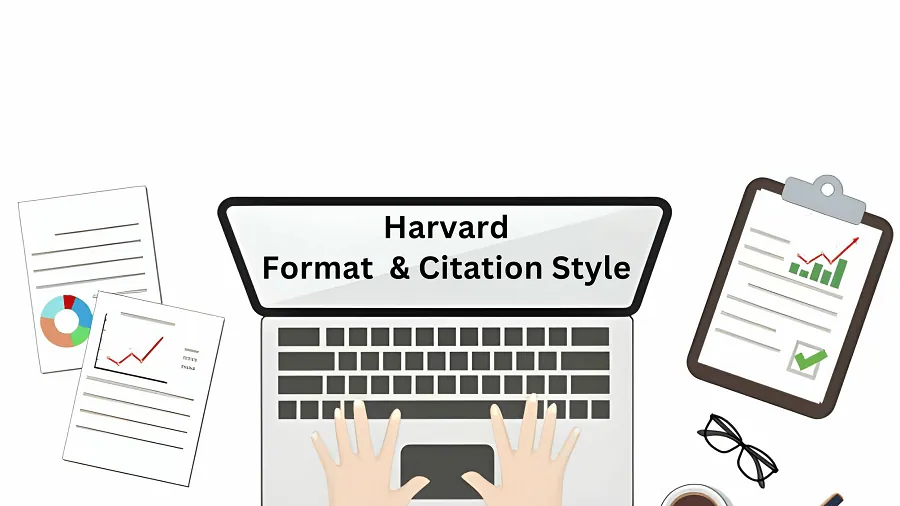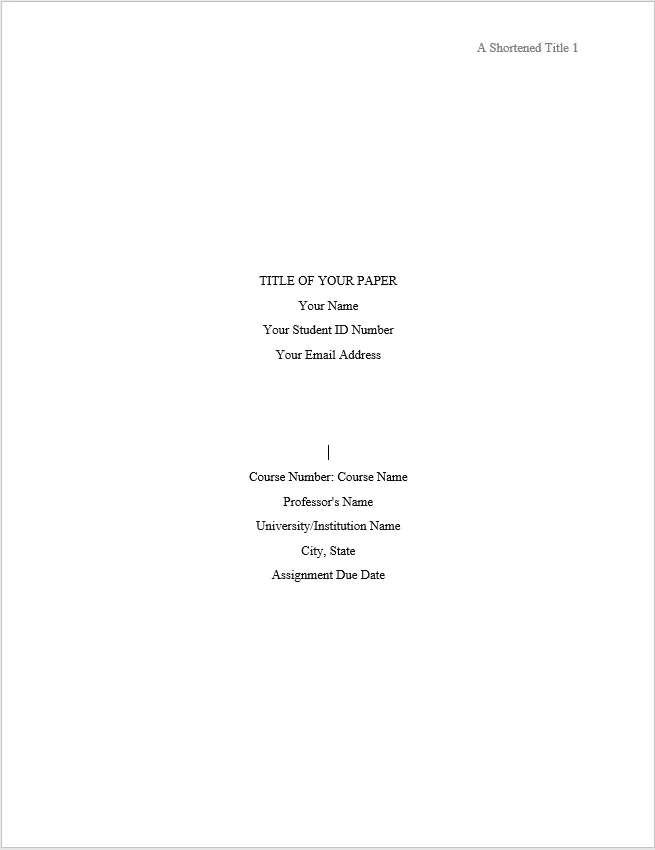
Referencing is a critical part of academic writing that tells readers the sources you have used in the papers and directs them where to find them. Havard is a common formatting style used in colleges and universities in the UK. It consists of specific guidelines that must be followed to the letter. So, learning how to format it in Harvard style would be helpful.
In this guide, we will provide you with all the information needed to refer to the Harvard style.
Havard formatting style or parenthetical referencing style is a commonly used citation style in humanities, social science, science, and natural sciences. Havard University developed it to help students and researchers provide clear and consistent attribution of sources.
If you ask, "How do you know if a reference is Harvard style?" the answer is simpleHavard style uses author-year in-text citation, for instance (smith, 2009), followed by a corresponding reference list at the end of your essay or research paper. In other words, Harvard is used in the body of the essay rather than footnotes to make it easier for your readers to know what has influenced you to write the paper.
The following are the main elements of Harvard referencing:
The publication date is found on the back of the title page. Please note that when you can't get the publication date, use the following:
|
The publication date is uncertain or unknown |
Example of what to use |
|
One of the other dates is correct |
(2002 or 2005) |
|
Probable date |
2002? |
|
Approximate date |
c.2002 |
|
The year is unknown, but the decade is |
199- |
|
You know nothing about the date |
N.d or no date |
A place of publication is the town or city. If a source lists more than one place of publication, use only the first place.
If there is no place listed, use s.l sine (loco).
If you are in the US, include the state. Use the abbreviation of the state. For instance, Alabama- Ala. Kentucky -Ky. Ohio- Oh, Alaska- Ak, etc.
Use a colon to separate the place of publication and the publisher, such as Oxford: Oxford University Press.
If the publisher is unknown, us s.n. (sine nomino).
Omit the initials of a publisher. For instance, J. Smith is referenced as Smith.
Only use initials when distinguishing between different publishers. For instance, J. Wiley and A. Wiley.
Follow these rules when writing titles.
Acronyms or initials are used for corporate authors. For example, (WHO) the World Health Organization.
The acronyms of a corporate author must appear in-text and in the reference list.
If you use numerous references for a particular source with a long corporate name, you may use the acronym. However, the first in-text citation should contain both the full corporate name and its acronym. For subsequent mentions, only use the acronym.
In the reference section, include both the full corporate name and the acronym.
You will be required to use the Havard referencing style because of the following:
Provide Clear Attribution of Sources
Using the Havard reference style provides a clear and consistent guideline for reference sources in your paper. When you include the author's name and publication year in the middle of your text, you help readers identify and locate the sources for further reading.
Demonstrate Academic Integrity
Correctly using the Harvard reference style establishes your determination to uphold academic integrity. Parenthetical referencing allows you to give credit to the original author of the sources used in the paper. This also allows readers to review your sources and check them for credibility while avoiding plagiarism.
Provide Consistency
Havard's referencing style provides a clear and consistent format for citing various sources in your academic work. By following this set of guidelines, you can ensure uniformity in your work and make it easier for readers to navigate through it.
Provides Flexibility
Havard's referencing style is flexible and adaptable to different sources. It can accommodate primary sources, secondary sources, multimedia, online sources, books, etc.
The Havard formatting style comprises two parts: in-text citations and a reference list.
Citation refers to a quotation from a book, article, paper, or other scholarly source. It is a way of giving credit and telling readers where specific information is coming from. In Havard's reference style, the citation follows the following format (Author-Year) appearing in the body of your work: It consists of the author's surname and the source's year of publication.
In Havard referencing style, the in-text citation can be presented in two formats:
If there is a page number, include a colon after the publication year.
A reference list is a detailed list of sources used throughout the essay or paper. It contains publication information on these sources to guide readers on where to find them. It is also called the works cited page and has the following characteristics.
Please note that the reference list must be at the end of your paper and begin on a new page.
Additionally, your instructor may require a specific form of capitalization.
Here is how to reference different types of resources through the Havard Referencing style in your essay or paper.
When paraphrasing, quoting, or summarizing information from a book, you must provide a page number. The following are Harvard referencing style examples in-text,
(Smith, 1995, p. 20)
Author-date,
(Jones 2017)
If you only cite the main ideas, you don't need to include the page number. Just provide the author's name and year of publication in parentheses.
For books with two or three authors, list them in the order they appear in the book, using the ampersand (&) to separate the last two authors.
For instance, (Smiths, Campbel, & Zwart, 2010).
For books with four or more authors, list only one author appearing on the title page of the book, then use et al. for the rest of the authors. In your reference list, list all the authors in the order they appear and ampersand to separate the last two.
For instance, Young, H.D., Freedman, R.A., Sandin, T.R., Ford, & Zimmer (2015) Sears and Zemansky's university physics. San Francisco, CA: Addison-Wesley.
For a book without authors, use the title of the book in place of the name of the author. It should be made up of the following:
In-text citation (Medicine in New Age, 2008, p.23)
For your reference list, provide the following,
Medicine in the New Age (2008). 2nd edition. London British Medical Association.
If you are using the works of a single chapter in an edited book, do the following.
For in-text citation,
(Chapter author's surname, Year) for example,
(Zimmer, 2019.
In the reference section, provide the following:
(Chapter author(s) surname(s), Initial(s). (Year of publication). Chapter's Title. In: Book editor(s) surname(s), Initial(s)., followed by ed. or eds. Title of book: subtitle, if any. Edition followed by ed. (if not the first edition) Place of publication: Publisher, page number(s) of the chapter. For example,
Bruen, M. (2020). Psychological analytics. In: Kelly-Quinn, M. and Reynolds, J., eds. Ireland's rivers. Dublin: Harper Collins, pp.39-59.
If you have used eBooks in your paper, you will need the following to quote the material.
For in-text citation:
(Zane, 2017)
For reference list:
Author(s) surname(s), Initial(s). (Year of publication). Title of e-book: subtitle, if any [online]. Edition followed by ed. (if not the first edition) Place of publication (if any): Publisher. Available from: library database name or URL if accessed online from somewhere other than a library database [accessed date].
For example:
Levine, L.E. and Munsch, J. (2021). Developing Understanding of Young Children [online]. 4th ed. London: SAGE. Available from: https://books.google.ie/books?id=zlrZzQEACAAJ&dq [accessed 2 June 2022].
It should have the following:
For intext:
(Smith, 2022)
If you are quoting directly from a book without pagination, cite the specific section, chapter, and paragraph number.
For your reference list:
Smith, T. (2022). The Master of Shipping. [Kindle DX e-book]. London: Atlantic Books. Accessed: 4 June 2022).
For the audiobook, you will need the following:
For in-text citation
(Smith, 2004)
Reference list
Smith, S. (2004). The End Times. Available from: http://audioboostore.com (downloaded:20 June 2007).
If you are quoting a thesis or dissertation in your paper, you will need the following:
In-text citation
(Smith, 2005)
Reference list
Smith, E. R. C. (2019). Conduits of invasive species into the UK: the angling route? Ph. D. Thesis. University College London. Available at: https://discovery.ucl.ac.uk/id/eprint/10072700 (Accessed: 20 May 2021).
If you want to quote journal articles, use the following for both print and online materials:
For in-text citation,
(Smith, 2006)
For reference list,
Selman, P. (2012). The global decline of intercountry adoption: what lies ahead? Social Policy and Society, 11(03), 381-397. Available at: doi:10.1017/S1474746412000085.
If you are using a print journal, don't include the DOI or the URL after the page numbers.
If you want to reference a newspaper article in Harvard style, you must have the following:
For in-text citation:
Author (s) (last name) year of publication.
For example, (Smith,2009).
For reference list,
Author (s), Title of the article, Newspaper title, Day and month of publication, page (s). Use (p) for single page and (pp). For instance,
Brady, B. and Dutta, K. (2012). 45,000 caught cheating at Britain's universities. The Independent on Sunday, 11 March 2012, pp. 4-5.
Clarkson, S. (2008). Wanted: 25 hours in the day. Red Magazine, December 2008, pp. 91-94.
Remember, if you are unsure about how to format, you can use the Havard referencing style generator.
The following is Havard referencing style for a website; you will need the following:
In-text citation:
(Author/Owner Year)
For examples,
(Dundalk Institute of Technology 2022)
Reference list:
Surname, Initial. (Year that the site was published/last updated) Title of web page. Available at: URL (Accessed: date).
Organization (Year that the page was last updated) Title of the web page. Available at: URL (Accessed: date).
The following tips will come in handy when citing websites in Havard style,
If you have been asking, 'How do you cite an art in text Harvard?' You will need the following information:
If the artwork is seen online, include the following information:
For example,
In-text citation,
The panoramic image presents a magnificent impression of an urban environment dominated by smoking chimneys, factories, roads, bridges, and industrial wastelands. (Smith, 1955).
For reference list,
Smith, L.S. (2005) industrial landscape [oil painting on canvas. Smith France, Paris.
For online images, use the following format,
Surname, Initial. (Year) Title of photograph. Available at: URL (Accessed: date).
Use the following image as a guide:
Ensure your paper is properly formatted in Havard style. Use the following as a guide:
A Havard format style must include a title page, which is the first page of your paper and provides the basic information.
Creating a cover page in Harvard formatting typically involves including specific information in a structured layout. Here is how to format a cover page in Havard style.
The components of the page include:
1. The header contains a short description of the title and a sequential page number. It is aligned to the right of the header section of the paper.
2. You should position the title of the paper halfway down the page, at least 33% from the top. It includes components such as:
The elements are all center-aligned (should be in the middle of the page)
When formatting a header, you must provide the following information:
3. Four lines after the name of the author (your name), you should include:
All these elements are also center-aligned
Example of Harvard Style Cover Page
Check out the image below to get a hang of what is required. Even then, here is the template for the main sections of the cover page:

You can download the quick referencing guide from Staffordshire University.
By adhering to the rules and guidelines for Havard referencing style, you can ensure integrity in your work and demonstrate your commitment to upholding academic excellence. While this formatting style might seem challenging to learn at first, with practice, you will master everything needed to reference your work effectively.
Related:
When it comes to the mastery of Harvard Style Citation, our writers are the experts. They will research, explore, and write a paper that adheres to the author-year citation formats, has a Harvard cover page (free), and has a reference list (free). The papers include paragraph numbers and page numbers for the accuracy of the information, something that the AI content generators or writing tools cannot do. Take advantage of our paper writing services to get high-quality Harvard-style citation papers today. Place your order now.
